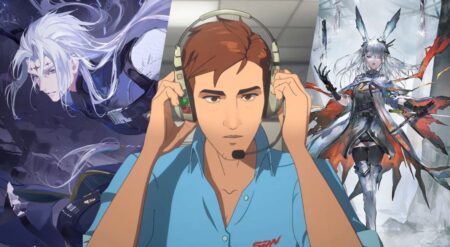
Harlots is on episode 2 of its 8 episode run and I can say it is one of the best shows on television about the female experience. Now, before you ask, a show about prostitution CAN discuss the ways sex work marginalized women but also be sex-positive and highlight the strength of women. The story is driven by the women of two competing brothels, and our heroines are madame Margaret Wells and her two daughters Charlotte and Lucy. All from the same family, in the first episode, the viewer is taught how the “sins” of the mother are attributed to her daughters, even while they remain virgins. The family business is sex work and the harlots, we see, aim to succeed.
This isn’t to say they are happy in their position. With the threat of being mistreated by their callers and their social standing in Georgian England, sex work is well situated in the patriarchal system that it was built from and works to reinforce. All that being said, the harlots, like most women living in the 21st century, have found a way to negotiate the patriarchy and have agency in a society that would throw them away.
Although the women know that sex work isn’t the safest, it offers them a sense of self and independence they do not have if they are married off. This debate is central to the decision that Margaret makes for the selling of her daughter’s virginity. The choice is obvious, Lucy would become owned by a man in a marriage with no right to property, or she would become a harlot with the freedom of upward mobility and choice. Although this isn’t the case for all of the women, as the second generation of harlots in their family, and the daughter of a madame, Charlotte, and Lucy are educated and their mother’s brothel (boarding house for young ladies) is the key to buying their way out of low society.
Where the women can have upward mobility through marriage, they also lose their agency and freedom to own land. By selling themselves and amassing money, they can move with freedom. Another important issue that Harlots points out is that sex work was not just poor and/or uneducated women getting through the world selling one of their few marketable skills. Sex work was done by all classes of women high-born and commoner alike. This is showcased by the house the Wells girls are competing with, the house of Lady Quigley. A brothel of educated, cultured, and seemingly high-born women are sold in the same-way Wells’ girls are.
While the harlots are shown to be partaking in “deviant acts” (as characterized by the religious attempting to shut them down) the directors and writers situate them in a space where it is clear to the viewer that it is the man who asks for these acts. The underutilized female is gaze is highlighted in every scene of the show and the men’s bodies are shown more than women’s bodies and the women. We experience their work through their eyes. We don’t see them through the eyes of men, they are not presented to be demon-women, immoral-women, or victims. While it is not hidden that some of the women were forced into the trade because their lives were devalued once they were raped or were sold into the trade by their mothers, the show is not about victimization but of survival. The show is about what these women do while living in a system that rejects them, victimizes them, and limits their mobility and choices. These women are strong in the face of these things. Sex is a vehicle for the harlots to move through the world, not an act to be shamed.
The main reason this show works is that Harlots hired an all-female creative team. Two of which have given us some of the most character-driven television I’ve seen, Coky Giedroyc (Penny Dreadful) and China Moo-Young (Thirteen, Humans). Executive producer Alison Owen showcased this by saying: “It was very important to us from the beginning to make it about the female gaze. We were determined to make something different. Our hope from the beginning was, ‘Everything from the whore’s eye view.’”
As for race, slavery was not abolished in the British Empire until 1833, that being said the introduction of Margaret Wells’ significant other (I say this as interracial marriages were unacknowledged), William North. William’s inclusion can be taken as an afterthought, however, every interaction between Margaret and William or the Wells girls and him, show that he is family first. Both Lucy and Charlotte call him “pa” and Margaret and William have a son named Jacob. We will have to see how this plot point develops in future episodes. However, the writers initially play with the viewer’s assumptions, leading us to think that William is only the brothel’s protector, only to reveal that he is, in fact, a member of the Wells family. Although one of the harlots is a black woman, we don’t know much about her nor do we see actors of color in other areas.
That being said, is such a self-aware show has to have a plan to deal with these issues in the future. In episode three, I’m hoping to see more character development of the characters mentioned above and the introduction of other characters of color. Sadly I’m not too optimistic as shows based on women tend to only show white women navigating the world (which may be enhanced by the fact that the creative team except one member, are white women). *I am also aware that telling a story set in the 18th century makes this hard*






